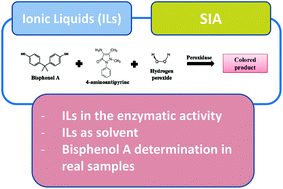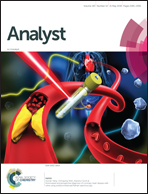The role of ionic liquids in the biocatalytic evaluation of bisphenol levels as contaminant: an automatic approach
Abstract
An automatic assay was developed that is intended to be a generic tool for evaluation of a horseradish peroxidase activity in different ionic liquids (ILs). Ionic liquids with different characteristics were used and their effects on the enzymatic reaction, were compared with those obtained with conventional organic solvents. In addition, ILs were tested as solvents for the enzyme substrate (bisphenol A (BPA)). ILs were shown to be a good alternative to conventional organic solvents from either the effect on enzymatic activity or the solubilization of bisphenol. Since bisphenol A is an endocrine disruptor frequently used in plastic industries, it was also applied the developed enzymatic methodology for quantification of this compound in real beverage samples. To increase the sensitivity (already increased by the use of an IL) and the selectivity of the methodology, a sample pre-treatment using a molecular recognition solid phase extraction was applied. Finally, the methodology presented detection and quantification limits of 7.73 × 10−4 and 1.29 × 10−3 mmol L−1 and a linear range up to 1.00 mmol L−1, allowing accurate and reliable quantifications of bisphenol in beer and cola drink samples. This work confirmed the potential of a sequential injection analysis (SIA) system as a simple, versatile, robust, and rapid analytical tool for automating enzymatic assays in ILs medium and, at the same time, showed it to be a relevant automatic alternative for routine determinations of bisphenol A in food samples.



 Please wait while we load your content...
Please wait while we load your content...